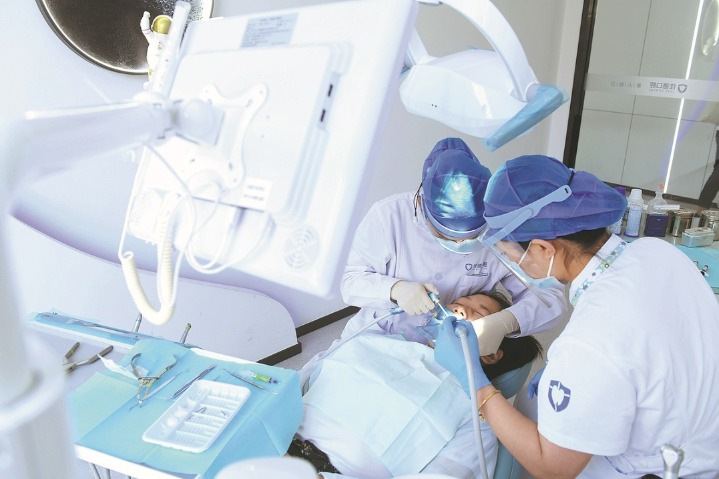Beijing resurrects makeshift hospital

City starts reusing SARS-era medical center amid efforts to contain outbreak
Beijing on Sunday officially restarted operations at Xiaotangshan Hospital, which was used solely for SARS patients in 2003 and COVID-19 cases in 2020, designating it as a medical center for COVID-19 patients in a bid to contain the recent outbreak of the novel coronavirus in the city, said a senior official.
"The hospital's reconstruction and addition of new inpatient areas have already been completed, so the hospital currently has 1,200 beds," said Li Ang, deputy director of the Beijing Municipal Health Commission, at a news conference on Sunday afternoon.
According to the commission, the hospital has nine quarantine units, and each unit has three floors. The medical treatment facilities, testing labs and image examination equipment, as well as the facilities for disinfection and sewage disposal, have all passed inspection.
"The first quarantine unit has been put into use," Li said. "A team of 40 medical workers consisting of eight doctors, 30 nurses and two hospital-acquired infection control professionals has started working in the unit. More medical staff from 19 other hospitals in Beijing will join the medical efforts at the hospital gradually based on the epidemic situation in the following days."
There are now 12 COVID-19 patients with mild symptoms receiving treatment in the hospital.
On Saturday, Li announced that Beijing has completed construction of fangcang, or makeshift hospitals, that can provide 4,000 beds in total for COVID-19 patients.
"Meanwhile, the city is planning to build more large-scale makeshift hospitals, and the authority is looking for suitable locations with enough space," he said.
Some districts in Beijing have also started seeking sites for the construction of new fangcang or choosing existing buildings that can be renovated for that purpose.
Li said the efforts aim to provide space for patients with few or no symptoms, as doing so can swiftly cut virus transmission and reduce the impact on medical resources of other hospitals during the epidemic.
He said there was no need for panic, and Beijing doesn't have a very high number of cases at the moment.
In January 2020, Beijing started rebuilding Xiaotangshan Hospital in preparation for its fight against the COVID-19 epidemic.
As the world's largest medical complex devoted to SARS patients, it was built in only six days in April 2003.
Beijing reported 51 new locally transmitted confirmed cases and four new asymptomatic carriers between 3 pm on Saturday and 3 pm on Sunday. The city's total number of infections since April 22 stands at 350 and involves 14 districts, according to the Beijing Center for Disease Prevention and Control on Sunday.
The capital's CDC has conducted the gene sequencing of dozens of cases, and the results showed that the virus from their samples is the Omicron variant and has the same source as the cases in the recent clusters in Chaoyang district, said Pang Xinghuo, the CDC's deputy director, at a news conference on Sunday afternoon.
"The gene sequencing is identical to the one in the recent clusters of infected cases outside Beijing, which have spilled out to other parts of the country," she added.
Among the 350 total infections, Chaoyang has 143 cases, followed by Fangshan district, which reported a total of 86 cases discovered between April 22 and Sunday, according to Pang.
Due to the increasing number of COVID-19 cases in Chaoyang, two more residential communities in the district were designated as high-risk areas on Sunday.
As of Sunday afternoon, Beijing has seven high-risk areas for COVID-19 and 28 medium-risk areas.




